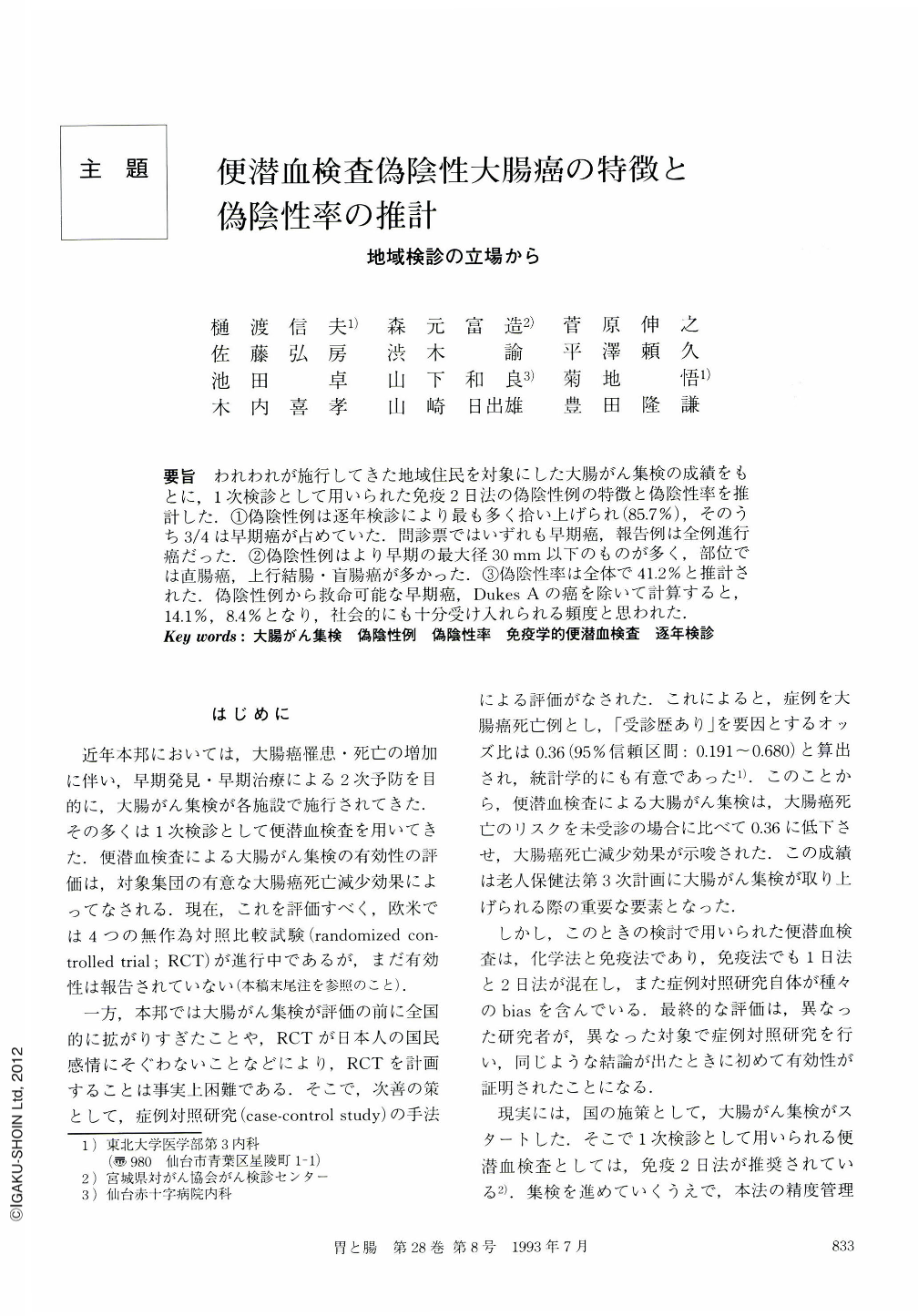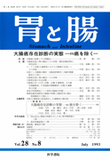Japanese
English
- 有料閲覧
- Abstract 文献概要
- 1ページ目 Look Inside
- サイト内被引用 Cited by
要旨 われわれが施行してきた地域住民を対象にした大腸がん集検の成績をもとに,1次検診として用いられた免疫2日法の偽陰性例の特徴と偽陰性率を推計した.①偽陰性例は逐年検診により最も多く拾い上げられ(85.7%),そのうち3/4は早期癌が占めていた.問診票ではいずれも早期癌,報告例は全例進行癌だった.②偽陰性例はより早期の最大径30mm以下のものが多く,部位では直腸癌,上行結腸・盲腸癌が多かった.③偽陰性率は全体で41.2%と推計された.偽陰性例から救命可能な早期癌,Dukes Aの癌を除いて計算すると,14.1%,8.4%となり,社会的にも十分受け入れられる頻度と思われた.
We have performed screening examinations for colorectal cancer since 1983 using several fecal occult blood tests and questionnaire. For evaluating the characteristics of patients with false-negative fecal occult blood and the false-negative rate, we analyzed the results of 2-day immunochemical tests.
In our study, 'false-negative' case was defined as a person who was diagnosed or judged to have colorectal cancer within 1 year since a negative fecal occult blood test. These cases were collected by the investigative reports, screening examination or questionnaire of the next year.
Most of false-negative cases were diagnosed by the screening examination of the next year and two thirds of them were early cancers. All cases picked up by the questionnaire were early cancers. On the other hand, all reported cases were advanced cancers. False-negative cases were likely to be early diseases and/or less than 30 mm in diameter. As for the location, rectal and rightsided colon cancers were common in false-negative cases. The false-negative rate was 41.2% in all cases. If early or Dukes A cancers were excluded from the false-negative cases, the false-negative rates were 14.1% or 8.4%, respectively. These rates may be acceptable to the public and not inferior to the false-negative rate of indirect roentgenography in gastric cancer mass screening.

Copyright © 1993, Igaku-Shoin Ltd. All rights reserved.


